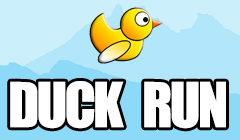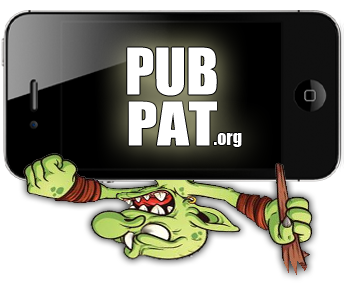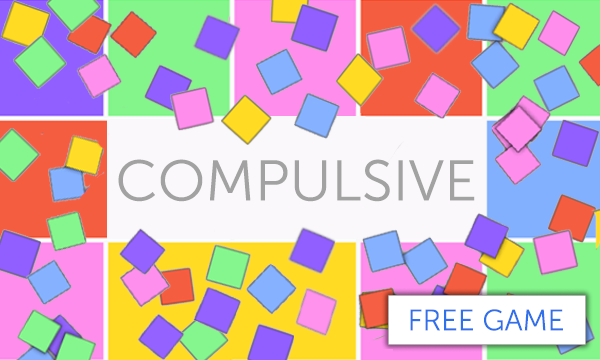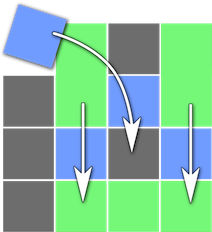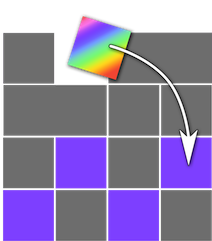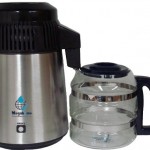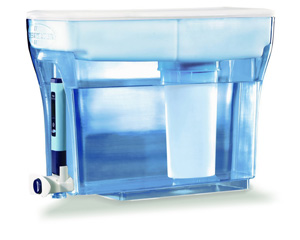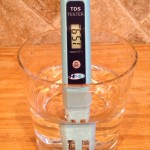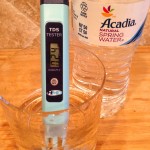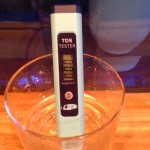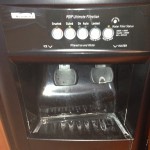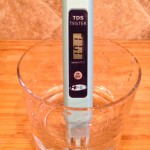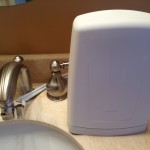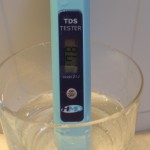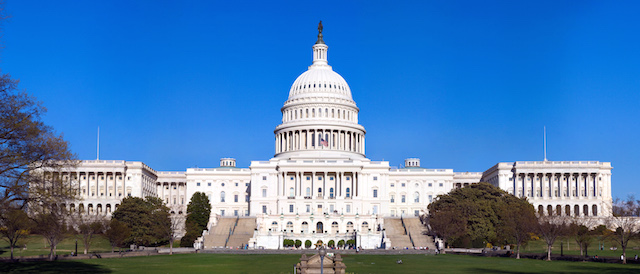
I’ve been asked by Congress to testify before the Subcommittee on Courts, Intellectual Property, and the Internet. I feel honored to be representing small businesses on the issue of patent trolls. I hope sharing my story will help bring meaningful patent reform so small businesses can spend less time with frivolous lawsuits and more time on innovation. Check out my recent article on Why Congress must ensure ‘game over’ for patent trolls.
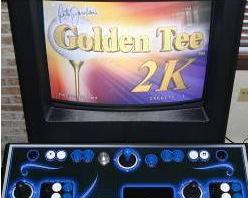
How to be #1 out of 21,800,000
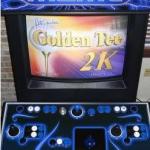 My “How to Build your own Arcade System” article has always been my most popular article. According to Google Analytics it represents over 99% of all my visitors to this blog. If you search Google for “how to build an arcade” you’ll see my article is the #1 link out of 21,800,000 results.
My “How to Build your own Arcade System” article has always been my most popular article. According to Google Analytics it represents over 99% of all my visitors to this blog. If you search Google for “how to build an arcade” you’ll see my article is the #1 link out of 21,800,000 results.
How is that possible?
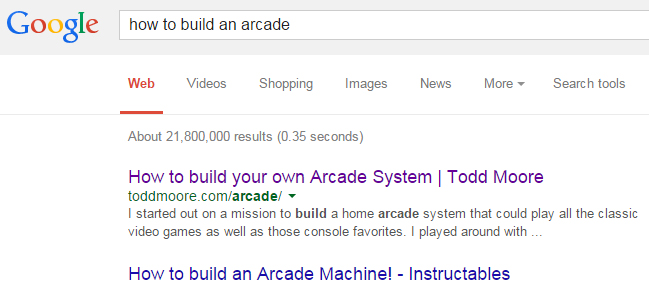
Searching Google for How to Build an Arcade
I think the reason is… well… first, it’s a pretty good article. I remember when I wrote it, years ago, that there wasn’t one place that had all this information–the arcade cabinet, the hardware used, the software configuration. It was months of research. A labor of love. The article that followed was completely original. My words. And then over time other blogs started linking to it. Discussing it. And ultimately that’s the reason why Google thinks it’s pretty good too.
Flappy Bird is flapping about Copyright Infringement
Flappy Bird’s company dotGears recently notified Apple that my game Duck Run infringes on their copyrights, specifically the bird character used in the game. I spent hours drawing my duck character in photoshop and I think it looks nothing like Flappy Bird. What do you think?
The above Flappy Bird image was pulled from the USPTO FlappyBird trademark application. This application was recently filed by Dong Nguyen in March, 2014 and is waiting for review. He is not just filing this under electronic games but also watches, stationary, hand-bags, glassware, blankets, pillows, clothes, and toys. Not only is Flappy Bird coming back to the App Store, but it appears dotGear is taking the Angry Birds approach and will start selling merchandise. And why not?
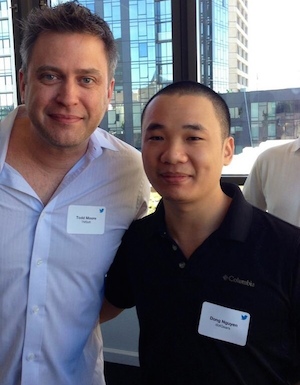 We all know the story of Flappy Bird and how it quickly became a huge success only to be removed from the App Store because the author couldn’t handle the stress. I covered this story on my Tech 411 podcast and even had a chance to meet the author, Dong Nguyen while at GDC this year.
We all know the story of Flappy Bird and how it quickly became a huge success only to be removed from the App Store because the author couldn’t handle the stress. I covered this story on my Tech 411 podcast and even had a chance to meet the author, Dong Nguyen while at GDC this year.
I was actually really excited to meet him, as the Flappy Bird story was really big at the time. I only asked him one question, “Are you bringing Flappy bird back?” “Yes” he replied. We were both at Twitter HQ so it seemed appropriate that I should tweet the news. The next thing I knew, Mac Rumors was running the story.
Is Flappy Bird Original?
We are all influenced by the work of others. I recommend watching Everything is a Remix to really see this point illustrated. The artwork and gameplay from Flappy Bird is far from being original. Let’s compare it to Nintendo’s Super Mario Brothers:
Flappy Bird, on the left, has almost identical green pipes found in the Super Mario Brothers game. The Flappy Bird gameplay is very similar to the secret underwater world found in the same game. Mario is controlled by tapping a button that flaps his arms causing him to move upward, while not flapping causes Mario to fall downward. The Flappy Bird graphic itself looks more like the fish from this same underwater level than my little ‘ol duck.
Why Build Duck Run?
Dong said that it took him 3 days to create Flappy Bird. I was impressed he was able to make a side-scrolling game in just 3 days. I wondered if I could create a flappy style game in the same amount of time. Considering I’ve competed in plenty of hackathons and even wrote a game in just 20 lines of code (which became the starting point of my book), I thought this would be a fun challenge to take on. After just 3 days, I had completed my game which I called Duck Run and released it to both the Android and iOS platforms.
Duck Run received great reviews and has pulled in around 200k free downloads. Because it was so simple, it became my go-to game for learning how to port to other platforms. It’s now available on the Mac platform and Amazon Fire TV. I think it’s smart to have a simple game in your portfolio for this reason alone.
Decision Time
The last thing my company needs is another frivolous lawsuit, but I refuse to be bullied into removing Duck Run from the App Store. I think it’s pretty clear it does not violate any trademarks or copyrights. I’m not sure the original Flappy Bird game could say the same thing.
Patent Troll Dismisses Frivolous Lawsuit and then Donates to Charity
Lodsys has dismissed the patent infringement lawsuit it filed against my company TMSOFT. The dismissal is with prejudice which means they can never sue my company again for infringing its patents. I did not have to pay any money to Lodsys or sign a license agreement. I also did not sign a confidentially agreement so I’m free to talk about this matter.
So what did I have to agree to?
- Never to sue Lodsys over its patents (I otherwise would have the right to ask a court to rule their patents invalid if I wanted)
- Dismiss all motions with prejudice (we had filed a motion to dismiss that also sought to recover my attorneys fees, costs and expenses)
- Make a donation to a mutually agreeable charity
I’m in the business of creating apps, so mutually agreeing not to sue each other was fine with me. Dismissing all our motions would terminate this lawsuit which is what I wanted as long as I didn’t pay Lodsys a dime and I could still talk about it. The mutual donation to charity was also fine with me especially if it was to the EFF or PubPat.org. Of course they wouldn’t agree to that, so Make-A-Wish Foundation was selected.
I was a little confused about why Lodsys wanted to make a donation to charity. I asked my lawyer if it was to make them appear more human. He said it is most likely because if we would have said no to this offer, the judge could have said we were not behaving reasonably. That seems a little ridiculous given they were the ones that filed this frivolous lawsuit. But, I get the point that Lodsys could say to the judge they were willing to dismiss it if only I’d make a small donation to a charity. This would be their way of making me look like I was the one wasting the court’s time by continuing to fight the case despite Lodsys being willing to dismiss it without me having to pay them anything.
Although this was a win for my company, it was only a win because I had Dan Ravicher and his associate from the Public Patent Foundation (pubpat.org) representing me pro bono. It is extremely rare to get this kind of assistance (I know of no one else out there offering to defend small businesses like mine pro bono from patent infringement allegations) and I am very fortunate that someone as talented as Dan agreed to fight these bullies for free. I asked Dan how much this would have cost me:
“I’ve spent about 200 hours on the matter and Sabrina about another 80. My comparable market hourly rate (partner at a top NYC patent firm) would be $750 and a comparable rate for Sabrina (senior associate at a top patent firm) would be about $500.”
The total costs to my company would have been $190,000. And that’s just for the initial response to this lawsuit. We hadn’t even gotten to court which would have increased that amount into millions. Remember that it only cost Lodsys about $450 to file the lawsuit. This is why small businesses will usually always settle. It’s just not worth it to fight. And even if you could win and get awarded your attorneys fees and costs, which are very rare, you probably won’t see a dime of that money.
This is because patent trolls are set up as shell companies without much in assets. Any money that the patent troll receives from all the licensing agreements is immediately distributed to other companies—this includes the law firm representing the patent troll on contingency and the company that originally held the patent. Any money you might be awarded will be long gone by the time it comes to collect.
Payments are also sent to the troll using overseas bank accounts. This is mainly to avoid paying US taxes, but it could also make it more difficult to follow the money if an investigation was ever brought on. The patent trolls have created an extortion business model that is virtually risk-free–Nothing to lose and everything to gain.
There is a lot of talk going on about patent reform, but most of the ideas being discussed would not help small companies. In my next article, I’ll discuss solutions to the problem and my visit to Capitol Hill where I was able to share my story to those that might be able to fix our broken system. Hopefully one day tech startups can stop worrying about patent trolls and get back to building cool stuff.
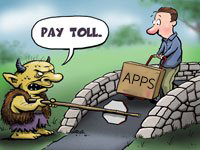
Why I’m not paying the Troll Toll
 My company TMSOFT was recently sued by Lodsys in the eastern district of Texas. I initially thought I was being sued for using a hyperlink in my White Noise application (see below). I know now I’m being sued because the CEO of Lodsys didn’t like what I publicly said about their company. That’s right. I’m being sued because I called Lodsys a “patent troll” on my podcast, Tech 411.
My company TMSOFT was recently sued by Lodsys in the eastern district of Texas. I initially thought I was being sued for using a hyperlink in my White Noise application (see below). I know now I’m being sued because the CEO of Lodsys didn’t like what I publicly said about their company. That’s right. I’m being sued because I called Lodsys a “patent troll” on my podcast, Tech 411.
This all started in May, 2011 when my co-host and I re-launched Tech 411, formerly a radio show in Washington DC, as a podcast on iTunes. Our first couple shows discussed how Lodsys was going after app developers. I commented that Lodsys was “patent trolling” with “evil letters” that were “complete b.s.” Around this time Apple had featured our show and it quickly became the #1 tech news show on iTunes.
Shortly after these shows were published, I received one of the infamous Lodsys letters which said I was in violation of their patents. Their letter included a screenshot of White Noise showing a web page used to share news and cross promote other apps. They highlighted a hyperlink that would open a URL to another one of my apps on the App Store. If opening a URL to a web page or app store listing is in violation of their patents then everyone who publishes an app would be in violation.

Lodsys claims this part of my White Noise app is a “Two-way interaction configured to elicit user perception information through an upgrade process” and is violating their patents. I call it a HTML hyperlink.
I invited Patrick Igoe, a registered patent attorney, onto Tech 411 Show #5 to discuss the matter. Patrick had already done analysis of Lodsys’ patents at his applepatent.com blog and he couldn’t find a single reason why app developers would be in violation. That was the same conclusion that Apple’s own legal counsel came to as well.
Over the course of a couple years, I received a few voicemails from either Lodsys or the law firm that was representing them. They wondered if I had any questions regarding taking a license agreement. The only question I ever came up with was wondering how they slept at night. I’m sure the White Noise I created for the purpose of better sleep wouldn’t help them. I continued to hope that Lodsys would think my company was too small to pursue.
That all changed when Lodsys sued another batch of App Store developers which included my company TMSOFT. They even filed suit against the Walt Disney Company. I guess I could be flattered that my little company is being sued along with a 100 billion dollar company, but it isn’t possible for smaller companies like mine to afford a proper patent litigation defense. I’m sure Walt Disney will be fine, but smaller companies like mine are usually forced to settle. And Lodsys really doesn’t want to go to court either; they just want companies to pay a licensing fee and not put up a fight.
I’ve been fortunate to have Dan Ravicher from PUBPAT (pubpat.org) represent my company pro bono in this matter. Pubpat is a not-for-profit organization that has the mission to protect freedom in the patent system. He’s a champion of the little guy who has offered to help app developers and small companies that have been targeted by Lodsys. He is currently representing local farmers against Monsanto, a company that is very aggressive with its patents on genetically modified seeds. He has presented at Google on protecting freedom in the patent system in which he describes some serious issues with our patent system.
Dan contacted the lawyer for Lodsys, who actually admitted to him that this wasn’t about money. It was about the things I said on my tech podcast and blog. During that time, the CEO of Lodsys, Mark Small, was getting a lot of negative media coverage and even wrote on his blog that he received several death threats. Mark obviously didn’t like the comments I made about his company and retaliated by sending a patent infringement letter.
Lodsys is seeking a percentage of revenue from the time they sent me the letter to the time their patent expired. Usually they request around 1% of your in-app-purchases. My company made about $500 with in-app-purchase during this time period and 1% of that is $5. What? I’m getting sued for $5? Given it cost Lodsys $350 to file the lawsuit I assumed they would ask for more than that. And they did.
Lodsys offered to settle with my company for $3,500. If I pay them off, what is stopping the next troll from knocking on my door? Nothing. And I’ve heard that if you pay a troll to go away it can lead to more trolls showing up. It’s like your company gets added to a spam list. That’s not a list I want to be on. I’d rather be able to talk about this issue and hope that at some point in the future our patent and legal system will change to address this serious problem. In the end, it’s dragging down our economy because small innovative companies have to spend time and money defending themselves against bogus lawsuits instead of hiring new employees.
My apps are not in violation of Lodsys’ patents. My lawyer believes this. Apple has stated app developers are not in violation. The EFF says it’s time to beat this troll. If I were to take the Lodsys offer then I’d have to sign terms where I couldn’t talk about it. That’s a real problem because there are lots of people that want to share their patent troll story but they are no longer allowed. I don’t want to be censored. I want to openly discuss issues that are facing my industry. I believe that this case will be dismissed (PUBPAT has filed the motion to dismiss below on TMSOFT’s behalf) and I hope this will open up a path for others to follow. Will you help me in this fight?
One thing you can do to help is spread the word to raise awareness. Share this article on Twitter and Facebook. Another thing you can do is donate to PUBPAT’s Defend Apps from Patents Campaign.
Additional Information:
Are you Compulsive?
I just released COMPULSIVE for iOS and Android. It’s a puzzle game. The rules are pretty simple in that all you have to do is join 4 or more tiles of the same color to score points. The bigger groups you clear the more points you get. And you earn a bonus multiplier if you can create chain reactions–one group clears which causes another to clear. The game last 60 seconds which is plenty of time to score lots of points.
The first thing I noticed when people play Compulsive is they don’t realize tiles can move to any location on the board. This is most likely because they are use to playing Bejeweled or Candy Crush. This will only hurt your chances of scoring big because Compulsive lets you move tiles clear across the screen to make a move. It only requires that there be a same color tile next to where you drop it. That’s it. I found after experimenting with a lot of different rule sets, that having more restrictions on tile movement just wasn’t as fun. I never got into Bejeweled for probably this very reason.
There is a special glowing tile that drops on the board every 15 seconds or so. It’s the coolest part of the game in that it cleans off all tiles of a specific color from the board. Just drag it onto the color you want to clear and then watch them explode. The glowing tile is very strategic. It can be used to quickly clear a color that’s in the way, score some points, and setup an awesome combo. The glowing tile also clears itself if it hits the bottom row. It’ll reward you with 1,000 points when that happens which also counts towards a combo multiplier. Figuring out the best way to use this tile will take a little practice but the rewards can be great.
Where did I come up with the idea? I think I had a lot of influences from a lot of different games. The board is a vertical 6×8 rectangle with tiles that fall down the screen. This might remind you of Tetris. It has a very generous point system which might feel a little bit like Bejeweled. The design is very modern and clean which is similar to Letterpress. The glowing tile is similar in behavior to that of the diamond in Super Puzzle Fighter II. The Mike O’Meara show thinks the music comes from the movie American Psycho. I really don’t think that’s the case… although it was one of my favorite movies of all time.
Please try it out and let me know what you think!
Play the sound already
I spent all day figuring out how to play a mp3 file in my Android app. Before you start to question my programming skills (which is fine) let me add a few requirements:
1. The sound file is contained in a subdirectory within my assets
2. The code should work for external assets outside of the bundle as well as assets within the bundle. For this reason I didn’t want to use resource ids.
3. The file should be streamed and not loaded entirely into memory.
The MediaPlayer seems like the best option to use and I immediately tried coding to that. I spent most of the time trying to get the Uri implementation to work (ex: “file:///android_asset/sounds/music.mp3”) but that just refused to work for me.
I was able to use the AssetManager to get a AssetFileDescriptor which can give you a FileDescriptor that can be used as a data source for the MediaPlayer.
Here is the code:
// get the asset file descriptor from our context
AssetFileDescriptor afd = mContext.getAssets().openFd(filename);
// media player created in idle state (always call setDataSource next)
MediaPlayer mp = new MediaPlayer();
// setting data source puts media player into the initialized state
mp.setDataSource(afd.getFileDescriptor(),
afd.getStartOffset(),
afd.getLength());
// setting of looping should be done in the initialized or
// prepared state (not idle state)
mp.setLooping(false);
// prepare required before calling start or stop methods
mp.prepare();
// listeners require running on the ui thread
mp.setOnCompletionListener(new OnCompletionListener()
{
public void onCompletion(MediaPlayer mp)
{
mp.release();
}
});
// finally play it
mp.start();
// cleanup afd
afd.close();
What’s in your water? Part 2
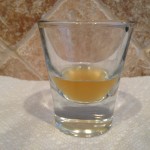 I have found out what’s in my tap water–Brown nasty chemical-smelling crap. And it’s not just in my water but yours too. I used a water distiller on 2 gallons of my tap water and the leftover is shown in this photo. Go ahead and click on it for the full image. I dare you. It’s darker than a lager beer and smells of deadly toxins. Would you drink this? No, I don’t think so. But you probably are if you are not using a distiller or high quality filter.
I have found out what’s in my tap water–Brown nasty chemical-smelling crap. And it’s not just in my water but yours too. I used a water distiller on 2 gallons of my tap water and the leftover is shown in this photo. Go ahead and click on it for the full image. I dare you. It’s darker than a lager beer and smells of deadly toxins. Would you drink this? No, I don’t think so. But you probably are if you are not using a distiller or high quality filter.
I purchased the Megahome Water Distiller so that I can remove fluoride from tap water. This is something a regular water filter cannot do. I could go on and on about why fluoride is not safe for you. But instead, I’ll point you to the warning label on the back of your toothpaste:
“WARNING: Keep out of reach of children under 6 years of age. If you accidentally swallow more than used for brushing, get medical help or contact a Poison Control Center right away.”
If it says that on toothpaste then why is it a good idea to put fluoride in our drinking water? I don’t understand it and I don’t want to get in a debate with any dental hygienists or conspiracy theorists. I’m just going to remove it from my water.
In summary, if you drink tap water then you might as well be drinking out of the toilet. Once you see and smell what is in your water, you will stop drinking it, and switch to bottled water or distill it like me. I’m still using my ZeroWater filter too. But now I pour the distilled water into that. It really makes for some great tasting water.
If you decide to buy any of these items please go through my online store so I get some Amazon credit. That way I can get more filters. Or maybe just cash. That’s nice too.
Read What’s in your water – Part 1 to learn more about water filters
What’s in your water? Part 1
I never thought about how good water filters were until I ordered a ZeroWater filter and it included a water testing tool. They claim their filter results in water with 0 PPM (parts per million). The higher the number means more particles and contaminants that not only make water taste bad but can also be bad for your health. It’s time for an experiment.
I tested my tap water, a bottle of spring water, and the ZeroWater filter:
My tap water clocked in at 159 PPM. Is that a good number? Apparently the World Health Organization says that water with a TDS (total dissolved solids) of 1,000 PPM is “acceptable” and under 600 PPM is “good.” Yeah, maybe if you’re living in a tent in Africa it’s good but for us fussy Americans we want crystal clear drinking water without any off-flavors. The higher the PPM number means the worse it will taste. The bottle of Acadia Natural Spring Water was much better at 24 PPM. And my new ZeroWater filter, as promised, clocked in at 0 PPM. Guess it’s not marketing fluff after all.
I have two other water filters in my house–My refrigerator’s water filter (uses a PUR filter) and a Dr. Mercola filter that was pretty expensive. In full disclosure, the refrigerator filter was replaced 2 months ago and the Dr. Mercola filter has about 5 months of use on it. The refrigerator filter definitely gets more use than the Dr. Mercola filter. The results really shocked me:
My refrigerator PUR water filter is worse than my tap water at 171 PPM! How can that be?
Shouldn’t it be removing something?
The worse rating goes to the expensive Dr. Mercola Pure & Clear drinking water filter which clocked in 178 PPM. It’s probably only fair to test the filters when they are brand new but I would still think that even if they are a few months old it shouldn’t be adding anything to the water.
I really like companies that back up their product claims, and the fact that the ZeroWater filter included a TDS water testing tool speaks volumes. The instructions say to replace the ZeroWater filter once it gets to 6 PPM. Maybe they should tell that to the entire water bottle industry.
Continue reading What’s in my Water – Part 2
Engineers are Worthless
Dear Engineer Friends,
You are the most worthless class of people I have ever known. I would never hire you. Engineers just sit around and think how great they are that they passed some tough classes in College. I need problem solvers out here in the real world. I need people that can use logic and creativity at the same time. Engineers solve problems recklessly and without concern for the future. If I was going to be plugged into a life support system, I’d make sure the logic behind the machine was created by a computer scientist. That way I’d have a much better chance of survival.
With the invention of the general purpose computer, engineers have been struggling to find their place in life. The sad thing is most of them end up taking our blue collar shit jobs that us computer scientists wouldn’t want–like writing websites, or maintaining someone else’s code– These jobs are perfect for engineers because they can operate like robots doing tedious tasks and not having to think.
The demand for solving math equations, building specific pieces of hardware, or researching better ways to transmit signals is just not there anymore. And if you say that’s not what engineers do, then I apologize because no Engineer has ever been able to tell me what exactly they do. In fact, the only answer you’ll get from an Engineer is that whatever they are working on isn’t what they do. Engineers are a bunch of chickens running around with their heads cut off.
If you Engineers think you’ll be designing the next processor for Intel, think again, you got the same chance to be selected on NASA’s next moon mission. And speaking of the moon, who do you think made it possible to land the LEM3 on it? It wasn’t those puppets Neil Armstrong and Buzz Aldrin, it was a team of computer scientists that deserve the credit for designing software that was ahead of its time.
The main thing I can’t stand about engineers is they smell.

